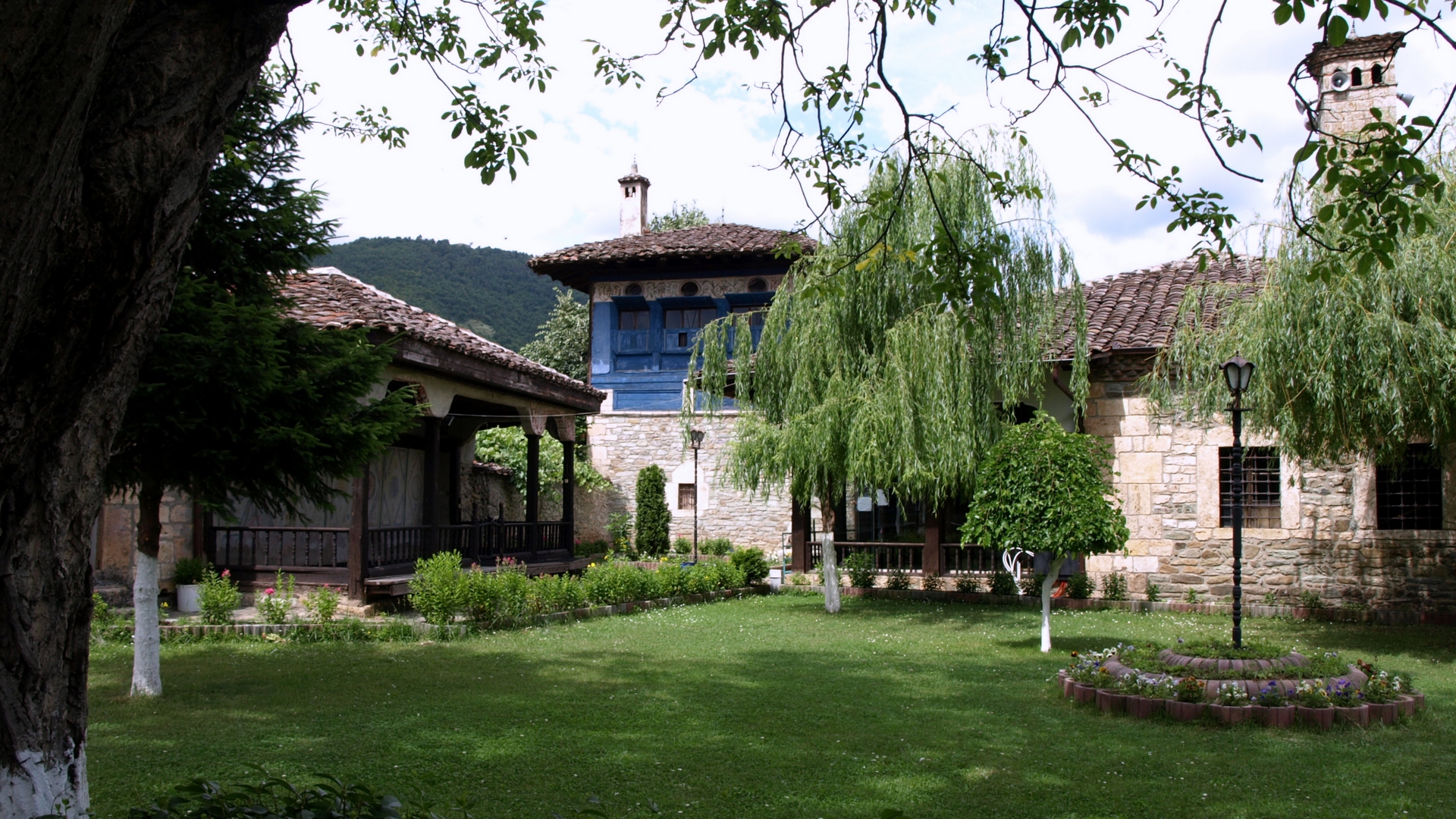Description
Property Name: Harabati Baba Tekke Complex
Inventory No: 389-94-1
Date of infill of the inventory form: 2009-08-12
Country (State party): Macedonia
Province: Tetovo
Town:
Geographic coordinates: 42° 0′ 12.77″ N
20° 57′ 27.13″ E
Historic Period: 18th century, 1st half
Year of Construction: First built in the late 16th century, today’s buildings were rebuilt in the 18th century
Style: Late Ottoman
Original Use: Tekke
Current Use: Tekke & Museum
Architect: Unknown
Significance
Harabati Baba Tekke Complex is important for its well preserved situation which is a rare one among other dervishes- bektashes’ tekkes in Macedonia. Bektashi order is an important doctrine for Albanian people for its regulating role in the religious, cultural, social and political life during the Ottoman period in Macedonia. Bektashi order is mainly based on humanism as a result, hospitality regardless people’s nations and religions makes the tekke complex a highly respected place among people. However, other than its honorable position, it was a spiritual and educational center where Sufism, poetry, painting and music were being practiced. Harabati Tekke is also a library, containing intellectual works of chosen calligraphy of that time, which were later ornamented and covered with leather. The physical characteristics also refer to dervishes’ tekkes in Anatolia. This complex is a unique one in Macedonia, thus it is a significant one as being a rare example of a kind. Among the architectonic features of the buildings, great workmanship of wood carving and fresco paintings as well as stucco decoration are remarkable details. Briefly, this building complex has developed parallel to the development of Islam, reflecting the cultural and religious formations in Macedonia within Bektashi Order.
Selection Criteria
ii. to exhibit an important interchange of human values, over a span of time or within a cultural area of the world, on developments in architecture or technology, monumental arts, town-planning or landscape design
iii. to bear a unique or at least exceptional testimony to a cultural tradition or to a civilization which is living or which has disappeared
iv. to be an outstanding example of a type of building, architectural or technological ensemble or landscape which illustrates (a) significant stage(s) in human history
vi. to be directly or tangibly associated with events or living traditions, with ideas, or with beliefs, with artistic and literary works of outstanding universal significance
State of Preservation
The complex is a well preserved tekke, the original details are mostly kept; however the complex should be cared after and infrastructure should be strengthened.Additionally; some functions were transformed and new buildings were build instead of them, starting in 1974. One of them is the hotel building, constructed on the previous place of ‘askerhane’, another one is the construction of the restaurant instead of existing horse stables. Another intervension is the enlargement of Kushk Hane with several temporary buildings in the northwest corner.
The tekke was originally built in 1538 around the türbe of Sersem Ali Baba, an Ottoman dervish.[1] In 1799, a waqf provided by Recep Paşa established the current grounds of the tekke. The teḱe saw a small revival between 1941 and 1945, the lands were taken as state property during Yugoslav times and made into a hotel and museum. In recent years, however, the site is being slowly refurbished. Although in considerable disrepair it is still the largest and most well-preserved teḱe in the western Balkans
In 2010, a significant part of the building was burned. In 2011, that group, along with the Turkish Cooperation and Coordination Agency (TİKA) – a agency of the Turkish government – and the Macedonian government signed an agreement to restore the tekke.
References
Conservation, Reconstruction and Revitalization of Harabati Baba Tekke Complex in Tetovo, PROJECT PROPOSAL, Skopje 2006
Official website of Tetovo; http://www.tetovo.gov.mk


